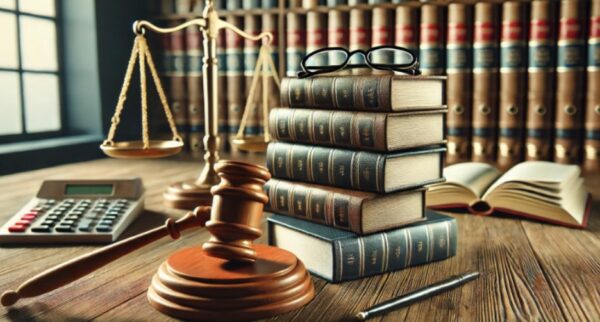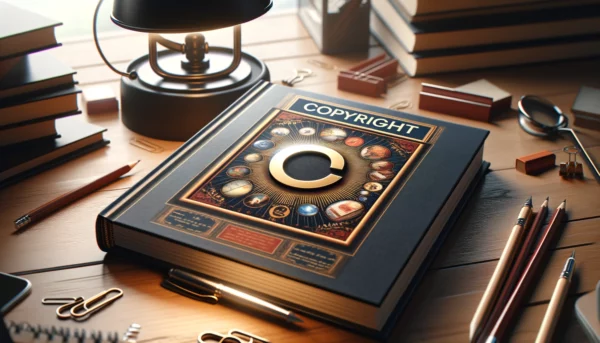In today’s digital landscape, the ease of content replication underscores the critical importance of copyright for self-published authors. This legal safeguard ensures their creative works are protected against unauthorized use, preserving their rights over distribution, reproduction, and adaptation. As independent publishers, self-published authors must grasp copyright fundamentals to protect their work’s integrity and financial viability without the support of traditional publishing houses.
Copyright, a cornerstone of intellectual property law, confers exclusive rights to authors over their original creations from the moment they’re materialized in a tangible medium, like a book or digital file. This encompasses the rights to reproduce, distribute, and modify the original work. For self-published authors, navigating copyright intricacies is essential. They must proactively register copyrights, establish clear copyright notices, and delineate the extent of their rights to deter unauthorized exploitation of their work.
Understanding and employing copyright protection is not merely procedural; it’s integral to an author’s professional identity, enabling them to secure the fruits of their creativity, contribute meaningfully to cultural and intellectual discourse, and maintain their unique voice in the literary world, all under legal protection.
Understanding Copyrights for Self-Published Authors
For self-published authors, copyright is more than just a legal formality; it is an essential mechanism that empowers them to protect their creative works and establish their rights in the competitive landscape of publishing. At its most fundamental level, copyright is a type of intellectual property law specifically designed to protect original works of authorship fixed in a tangible medium of expression, such as books, articles, poems, and other literary creations. This legal construct ensures that the creators of such works have exclusive rights to use, distribute, reproduce, and adapt their creations, thereby safeguarding their interests and fostering an environment conducive to creative innovation.
Start Your Publishing Journey FOR FREEThe significance of copyright in the context of self-publishing cannot be understated. Unlike traditional publishing paths where publishing houses typically manage copyright aspects, self-published authors bear the responsibility of understanding and securing their copyrights. This not only involves the legal protection of their work but also encompasses the strategic management of rights, which can include licensing, distribution, and dealing with copyright infringement. The autonomy of self-publishing brings with it the necessity for authors to be well-versed in copyright law to navigate the publishing landscape effectively and ensure their work is protected against unauthorized use.
Intellectual property law, with copyright as a key component, serves as the foundation for protecting the rights of creators in their literary works. It recognizes the author’s ownership and grants them a set of exclusive rights, typically for the author’s lifetime plus 70 years after their death. This extended duration of copyright protection underscores the value placed on literary works and the importance of intellectual property laws ensuring that authors and their heirs can benefit from their creative endeavors over time.
Central to the enforcement and administration of copyright laws is the copyright office. In many jurisdictions, this governmental body is responsible for the registration of copyrights, a process that, while not mandatory for copyright protection to exist, provides significant legal advantages. Registering a copyright with the copyright office establishes a public record of the copyright claim, which can be invaluable in the event of a dispute or infringement case. The process typically involves submitting an application, a copy of the work, and a registration fee. Once registered, the copyright is officially recognized, and the copyright owner is furnished with a certificate of registration, solidifying their legal claim to the work.
Key terms that self-published authors should be familiar with include:
- Copyright Owner: The individual or entity that legally holds the copyright and the associated exclusive rights to the work. In the context of self-publishing, the author usually retains copyright ownership unless they transfer their rights through a contract.
- Legally Protected: This term refers to works that are covered by copyright law, ensuring that the copyright owner has legal recourse to protect and enforce their rights against unauthorized uses.
- Copyright Notice: A statement, typically placed on the copyright page of a book, that informs the public of the copyright status of the work. It usually includes the copyright symbol (©), the year of first publication, and the name of the copyright owner. This notice serves as a warning to potential infringers and is an important aspect of copyright practice.
The Publishing Process for Self-Published Authors
The journey from manuscript to published book is both exhilarating and daunting, especially for self-published authors who navigate this path independently. The self-publishing process encompasses several critical steps, each demanding careful consideration and action to ensure the successful publication and protection of the author’s work.
Initially, the process begins with the completion of the manuscript, which is followed by rounds of editing and revision to refine the content. Authors often engage professional editors and proofreaders to ensure their work meets high standards, comparable to those upheld by traditional publishing. Once the manuscript is polished, the next steps involve design and formatting, including the layout of interior pages and the creation of an eye-catching book cover. These elements are crucial for attracting readers and ensuring a professional appearance.
An often overlooked but vital component of a self-published book is the copyright page. Positioned at the beginning of the book, this page serves a dual purpose: it provides essential publication details and serves as a clear declaration of copyright, protecting the author’s work against infringement. The copyright notice on this page, typically including the copyright symbol (©), the year of publication, and the author’s name, informs readers of the work’s copyright status and underscores the author’s legal rights.
Choosing between self-publishing platforms and traditional major publishing houses is a significant decision for authors. Self-publishing companies offer authors complete control over the publishing process, from design decisions to pricing and distribution, allowing for higher royalty rates. In contrast, major publishing houses take on the responsibilities of editing, design, and marketing, but they also retain a significant portion of the profits and control over the publication process. The choice depends on the author’s goals, resources, and desired level of involvement in the publishing process.
When it comes to copyright protection, self-published authors must make informed decisions. Registering the copyright of their work with the relevant copyright office provides legal advantages, such as the ability to bring forth copyright infringement lawsuits and the potential for statutory damages. This official registration reinforces the author’s ownership of the work and serves as a public record of copyright, adding an extra layer of protection.
The self-publishing journey requires authors to wear multiple hats, from writer and editor to designer and marketer. Understanding and navigating the publishing process, including the critical aspects of copyright protection, is paramount for self-published authors aiming to safeguard their creative works and achieve success in the literary world.
Start Your Publishing Journey FOR FREENavigating Copyright Law as a Self-Published Author
Navigating copyright law is a pivotal aspect of the self-publishing journey, requiring authors to have a grasp of both domestic and international copyright law frameworks. Copyright law, at its essence, is designed to protect original works of authorship once they are fixed in a tangible form, such as a printed book or an eBook. This legal protection extends automatically upon the creation of the work, granting the author exclusive rights to use, reproduce, distribute, and adapt their creation.
Internationally, copyright protection is harmonized to an extent by treaties such as the Berne Convention for the Protection of Literary and Artistic Works, which ensures that works are protected in all signatory countries without the need for formal registration. However, nuances in local laws mean that self-published authors must be aware of the specific requirements and protections offered in different jurisdictions, especially if their works are available globally.
Officially registering a work with the National Copyright Office, though not mandatory for copyright protection to exist, offers substantial legal benefits. It creates a public record of the copyright and is often a prerequisite for filing an infringement lawsuit in a court of law. Registration can deter infringement and provides prima facie evidence of copyright ownership and the validity of the copyright, should disputes arise. In the U.S., for instance, timely registration can enable authors to claim statutory damages and attorney’s fees in litigation, rather than just actual damages and profits.
Copyright infringement occurs when someone uses a copyrighted work without permission in a way that violates one or more of the copyright holder’s exclusive rights. When facing infringement, self-published authors should first attempt to resolve the issue amicably, often through a cease and desist letter. If the infringement persists, legal action may be necessary, and copyright registration plays a crucial role in this process.
Fair use is a critical concept, allowing limited use of copyrighted material without permission for purposes such as criticism, comment, news reporting, teaching, scholarship, or research. The determination of fair use is based on factors like the purpose of the use, the nature of the copyrighted work, the amount used in relation to the whole work, and the effect of the use on the potential market for the original work. Self-published authors must tread carefully, ensuring their use of others’ copyrighted material falls within the bounds of fair use to avoid infringement claims, while also being mindful of how fair use might apply to their own works being used by others.
Understanding and navigating copyright law is essential for self-published authors to protect their creative works and ensure their rights are respected both domestically and internationally. Being well-versed in these legal aspects enables authors to confidently share their works, respond to infringement, and make informed decisions regarding the use of copyrighted material.
Practical Steps to Protect Your Creative Works
Protecting your creative works is a crucial step for self-published authors to ensure their rights are safeguarded and their intellectual property remains secure. Here are practical steps authors can take to protect their literary creations:
1. Registering Your Copyright with the Electronic Copyright Office:
Registering your work with the electronic copyright office solidifies your legal claim and provides a public record of your copyright. The process typically involves:
Filling out an Application: Complete the online registration form for literary works on the copyright office’s website, providing further details about the work and its publication.
Paying a Fee: A registration fee is required, which varies depending on the method of registration and whether you are registering a full title page a single work, or multiple works.
Submitting a Copy of Your Work: Upload a digital copy of your work as part of the online application process. For works published in a physical format, you may need to mail in a hard copy.
Start Your Publishing Journey FOR FREE2. Drafting a Robust Copyright Page:
The copyright page in your book serves as a formal declaration of your rights and should include:
Copyright Notice: This includes the copyright symbol (©), the year of publication, and the author’s name, indicating the work is protected under copyright law.
Publication Information: Details about the publisher, publication date, and edition.
ISBN and Other Identifiers: Include the International Standard Book Number (ISBN) and any other relevant identifiers.
Rights Information: Statements about the rights being claimed and permissions for use, including disclaimers for any third-party content used under fair use or with permission.
3. Obtaining Permission for Copyrighted Material:
If your work incorporates material copyrighted by others, obtaining permission is essential to avoid infringement. This involves:
Identifying the Copyright Owner: Locate the owner of the copyright for the material you wish to use.
Requesting Permission: Contact the copyright owner with a detailed request to obtain permission, including how and where you plan to use their material.
Documenting Permission: Keep a record of the permission granted, ideally in written form, to protect against future disputes.
4. Monitoring and Enforcing Your Copyright:
Vigilance is key in protecting your rights. Consider these strategies:
Online Monitoring: Use tools and services that scan the internet for unauthorized copies of your work.
Copyright Notices and Watermarks: Make your copyright status clear on digital platforms and in any promotional materials.
Legal Action: In cases of infringement, a cease and desist letter may resolve the issue. For persistent infringements, legal action may be necessary, for which consulting with an intellectual property attorney is advisable.
By taking these practical steps, self-published authors can effectively protect their creative works, ensuring their intellectual property is respected and their rights are enforced.
Beyond Copyright: Other Considerations for Self-Published Authors
While copyright is a fundamental aspect of protecting literary works, self-published authors should also be aware of other elements of intellectual property that can affect their publishing journey. Understanding these additional considerations can further safeguard an author’s literary work, and contribute to their professional success.
Trademarks and Moral Rights:
Beyond copyright, trademarks can also play a significant role for authors, particularly in branding. A trademark protects names, phrases, logos, or symbols used to identify the source of goods or services. For authors, this might include a series title or a unique pen name under which they publish. Registering a trademark can prevent others from using a name or brand that could cause confusion among readers or dilute an author’s brand.
Moral rights are another important aspect, particularly in jurisdictions that recognize them, such as countries under the Berne Convention. Moral rights allow authors to protect their personal connection to their work, even if the copyright has been sold. These rights can include the right to be credited as the author, the right to object to derogatory treatments of their work that could harm their reputation, and the right to withdraw their work from circulation under certain circumstances.
International Standard Book Number (ISBN):
The ISBN is a critical tool for the distribution and sale of books, providing a unique identifier for each edition of a book. This numerical code allows booksellers, libraries, and distributors to catalog and track books efficiently. For self-published authors, obtaining an ISBN for each version of their book (e.g., hardcover, paperback, eBook) is essential for broader distribution and sales tracking. It facilitates listing on major retail platforms and in book databases, enhancing discoverability and professionalism.
Navigating the Public Domain:
Works in the public domain are not protected by copyright and can be freely used by anyone. For self-published authors, this means a wealth of literature, art, and ideas can be incorporated into their work without the need for permission or fear of copyright infringement. However, authors must ensure that the works they intend to use are indeed in the public domain, which typically occurs a certain number of years after an author’s death, varying by jurisdiction.
Start Your Publishing Journey FOR FREELibrary of Congress:
In the United States, the Library of Congress serves as the research library for Congress and holds an extensive catalog of published works. For authors, obtaining a Library of Congress Control Number (LCCN) before publication can enhance the book’s visibility and accessibility. While not mandatory, an LCCN allows a book to be included in the Library’s catalog and can add prestige and recognition to a self-published work.
By considering these additional aspects of intellectual property and publishing infrastructure, self-published authors can further protect their works and enhance their professional standing in the literary world.
Utilizing Artificial Intelligence (AI)
Utilizing Artificial Intelligence (AI) in the process of gaining copyrights can significantly streamline and enhance the efficiency of protecting intellectual property for creators and authors. AI systems can automate the analysis of works to ensure originality, assist in the preparation and filing of copyright registration applications, and monitor the web for potential infringements with unparalleled speed and accuracy. By leveraging AI, creators can navigate the complex landscape of copyright law more effectively, reducing administrative burdens and allowing them to focus more on their creative endeavors while ensuring their works are securely protected in the digital age.
In today’s digital era, numerous firms provide services to secure copyrights for authors’ works. Spines publishing platform stands out as a prime example, an AI-powered publishing platform that simplifies the publishing journey. They offer a comprehensive suite of services, including book cover design, audiobook production, and copyright acquisition, to facilitate a seamless and swift publication process for authors. Additionally, Spines ensures authors obtain the necessary copyrights for their works for free! You can sign up for free and get your free copyright protection with a few clicks.
Conclusion
In conclusion, understanding and protecting copyrights and copyright pages is imperative for self-published authors to safeguard their creative endeavors and ensure their intellectual property is respected. The journey of self-publishing is filled with opportunities and challenges, and a solid grasp of copyright law is a cornerstone for success. Authors are encouraged to take copyright seriously, not just as a legal requirement, but as a testament to their commitment to creative authorship and the integrity of their work. Navigating the complexities of copyright law may seem daunting, but it is an essential investment in an author’s future, offering peace of mind and legal protection in the dynamic world of publishing.







